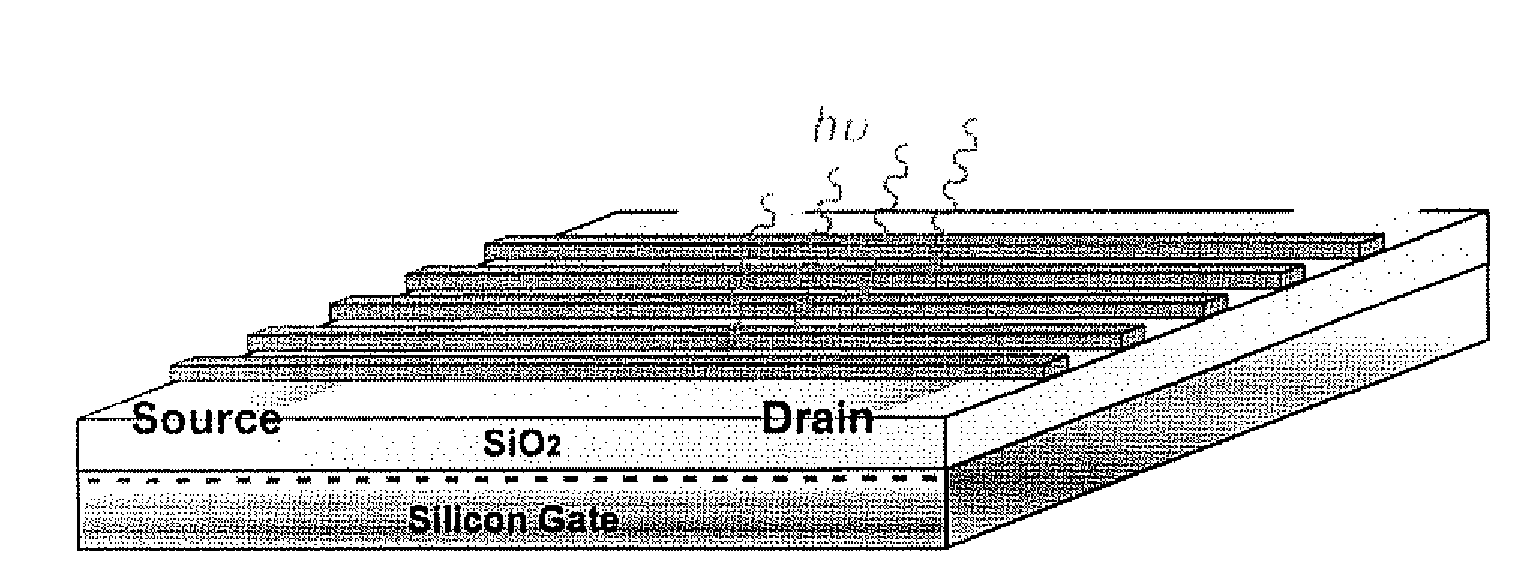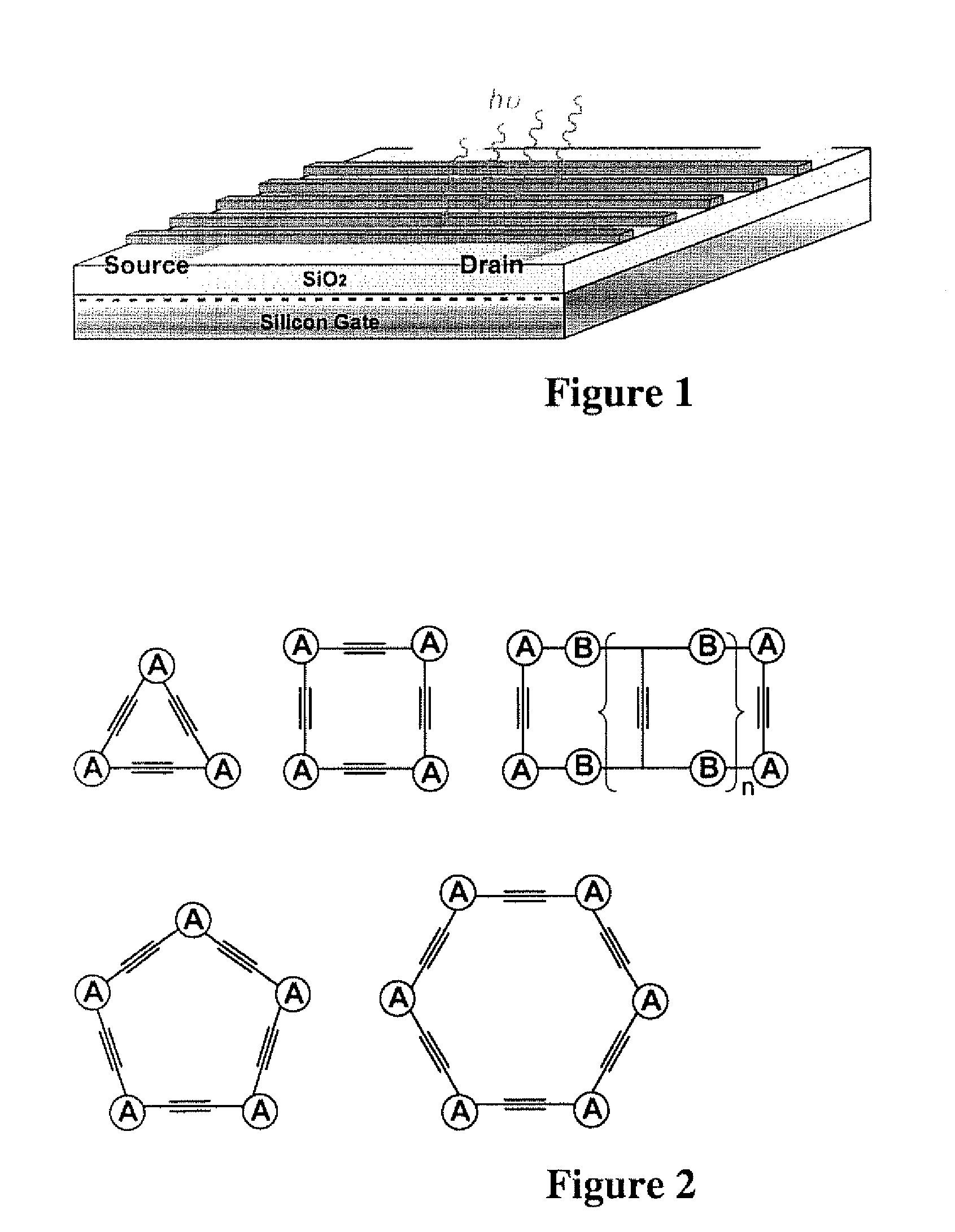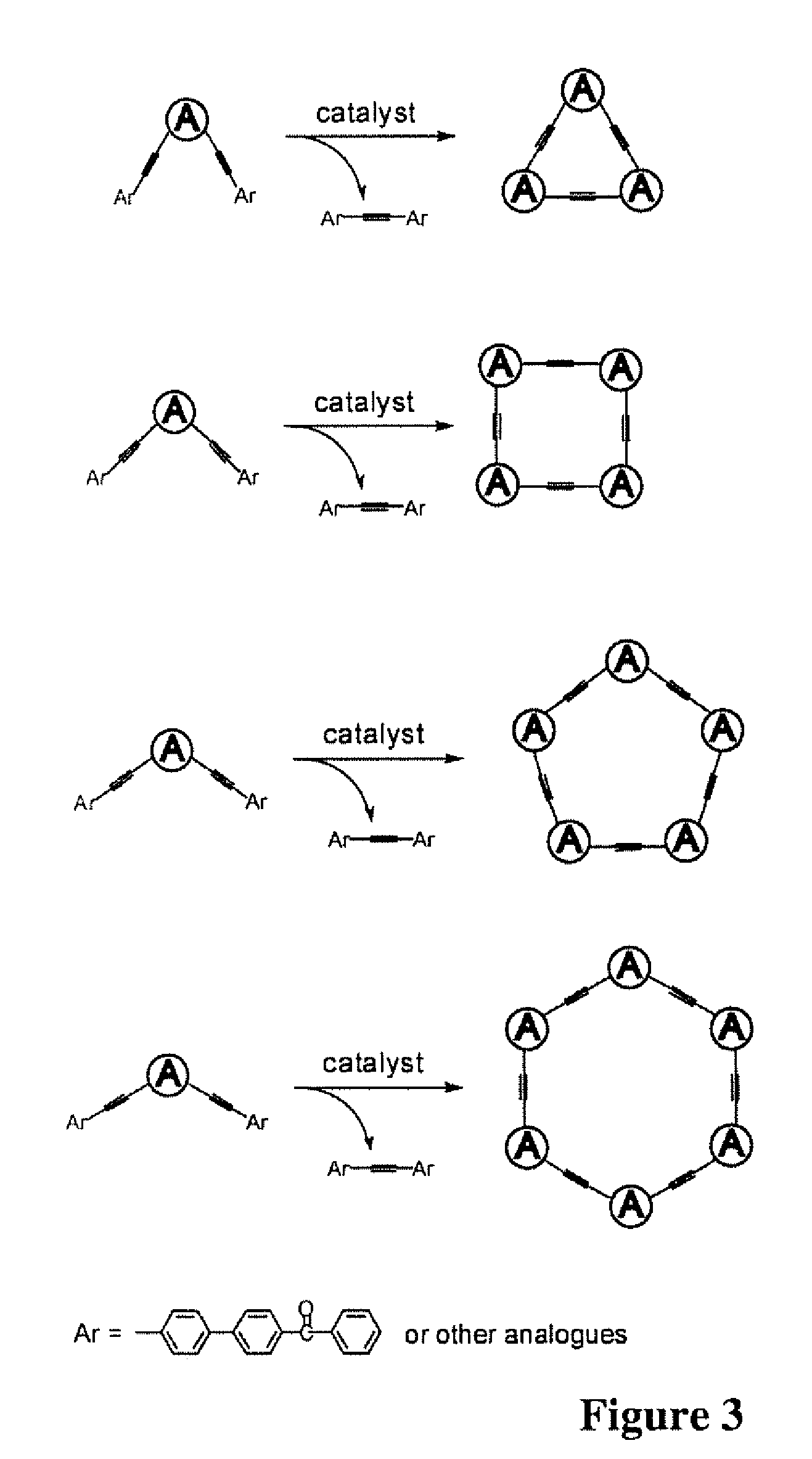Flourescent organic nanofibrils as sensory materials for explosives detection
a technology of organic nanofibrils and sensory materials, applied in the field of fluorescence and organic nanofibrils, can solve the problems of limited quenching efficiency of these materials, and achieve the effect of efficient sensing
- Summary
- Abstract
- Description
- Claims
- Application Information
AI Technical Summary
Benefits of technology
Problems solved by technology
Method used
Image
Examples
example 1
Synthesis of an AEM Molecule in Square Shape, Named ACTC as Shown in FIG. 6
[0096]ACTC was synthesized following the protocol depicted in FIG. 6. All air or moisture-sensitive manipulations were performed under argon protection using standard Schlenk techniques or in an argon filled glove box (model TS-5000 from Vacuum / Atmospheres Company). CCl4 was distilled over P2O5 and degassed before use. THF was distilled over Na before use. Analytical thin-layer chromatography (TLC) was performed on Kieselgel F-254 precoated silica gel plates. Visualization was performed with UV light (254 nm) or iodine stain. Flash column chromatography was conducted with silica gel 60 (230-400 mesh, 60 Å) from EM science.
[0097]The 1H and 13C NMR spectra were recorded on 400 or 500 MHz NMR spectrometers in School of Chemical Science (SCS) VOICE NMR Laboratory at the University of Illinois (http: / / www.scs.uiuc.edu / ˜mainzv / VOICE_NMR_Lab / ). Proton chemical shifts are expressed in parts per million (δ) using the ...
example 2
Theoretical Calculation of Energy Levels of HOMO (Pi) and LUMO (Pi*) Orbitals of ACTC, TNT and DNT, and the Molecular Configuration of ACTC
[0104]The results show a planar configuration of ACTC (FIG. 10), and large driving force of electron transfer from the photoexcited state of ACTC to TNT (2.4 eV) and DNT (1.9 eV) as shown in FIG. 11. Geometry optimization and energy calculation were performed with density-functional theory (B3LYP / 6-31 g*) using Gaussian 03 package.
example 3
Fabrication and Microscopy Characterization of ACTC Films
[0105]A uniform film of ACTC was fabricated by spin-casting one drop of the ACTC solution in THF onto a glass cover slip at a speed of 1,500 rpm. By changing the concentration of the ACTC solution (0.2-1.0 mM), different thickness of films were obtained as characterized below with AFM and spectroscopy methods. The rigid, planar geometry of the ACTC molecule (including both core and the side chains) affords effective cofacial stacking between molecules, leading to formation of one-dimensional, fibril nanostructures (FIG. 12 and FIG. 13). Indeed, the long nanofibril structures shown in FIG. 13 were fabricated simply by depositing a small amount of THF solution of ACTC (2 mM) onto a carbon grid. The long-range molecular stacking is conducive to the pi-pi electronic interaction along the long-axis, thus resulting in efficient exciton migration along the fiber. Moreover, entangled piling of large number of the nanofibrils produces ...
PUM
| Property | Measurement | Unit |
|---|---|---|
| Fraction | aaaaa | aaaaa |
| Time | aaaaa | aaaaa |
| Thickness | aaaaa | aaaaa |
Abstract
Description
Claims
Application Information
 Login to View More
Login to View More - R&D
- Intellectual Property
- Life Sciences
- Materials
- Tech Scout
- Unparalleled Data Quality
- Higher Quality Content
- 60% Fewer Hallucinations
Browse by: Latest US Patents, China's latest patents, Technical Efficacy Thesaurus, Application Domain, Technology Topic, Popular Technical Reports.
© 2025 PatSnap. All rights reserved.Legal|Privacy policy|Modern Slavery Act Transparency Statement|Sitemap|About US| Contact US: help@patsnap.com



